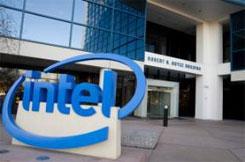Intel: Silicon Photonics Moving to Market
Intel announced Jan. 17 that it would team up with Facebook and the Open Compute Project to enable silicon photonics, open-sourcing a photonic receptacle design to the OCP. Intel’s chief technical officer Justin Rattner detailed how his company has moved its silicon photonics technology out of the research phase; other executives privately described it as being “midway” through the production stage. Intel also showed off a prototype rack in its booth at the Open Compute Summit, using optical technologies for both inter- and intra-rack connections. Silicon photonics had long been a staple of Intel’s R&D demonstrations at its Intel Developer Forum. The technology combines Intel’s expertise in chip manufacturing with high-speed optical networking, coupling optical connections to the silicon on the board. However, the company went quiet about it for the past two years, leading Rattner to joke with reporters that they must have thought Intel had forgotten about it. Intel’s silicon-powered rack prototype also uses Intel’s Ethernet switch silicon. The prototype will eventually support both its flagship Intel Xeon, as well as the next-generation Intel Atom chip, code-named Avoton. The module itself is capable of 100-Gbit speeds; Rattner described it as “cost-effective and very reliable,” and suggested that it will connect to the rest of the system via Ethernet or PCI. So far, one of the themes of the Open Compute Summit here in Santa Clara has been disaggregation, in which the storage, compute, and I/O functions of a rack-mounted server can be upgraded separately. Facebook said Jan. 16 that it would contribute a so-called “Group Hug” board that would separate out the CPU from the server, allowing it to be upgraded to either AMD, Intel, or ARM designs. “The first step is to get rid of things like sheet metal, where we’re solving problems like power supplies,” Rattner said onstage Jan. 16. “The next step is really to address fabric and switching, and see some of the earlier opportunities to disaggregate by focusing on storage and I/O. Critical to this step, we believe, is the introduction of silicon photonics, and not just the inter-rack fabric but the intrarack fabric... Once that infrastructure is in place and other technologies evolve, we believe we can do further disaggregation.” He added: “The last step is disaggregating the processor from memory.” Intel may achieve that in the next few years. Image: Mark Hachman


